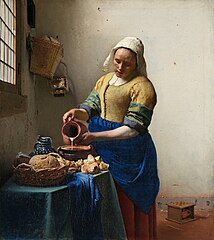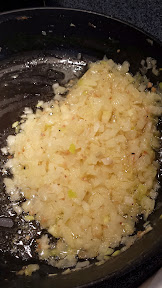For February, the book club Kitchen Reader selected the book Below Stairs: The Classic Kitchen Maid’s Story that Inspired Upstairs, Downstairs and Downton Abbey by Margaret Powell. Margaret was born in 1907 England and in this book, tells of her time working as a Kitchen Maid and eventually as a Cook, and generally what it was like be a servant in those times.
This memoir starts with her childhood for a few chapters, just to establish her upbringing with her hardworking parents, the fact that they were poor and yet how even in poverty there are joys, not just hardships.
She recalls when going to school “you took a piece of bread and butter with you, wrapped in a piece of paper, and gave it to the teacher to mind, because many of us children were so hungry that we used to nibble it during the course of the morning”. Another time, wanting to go to the circus, and in order to raise the money for her and her siblings to do so (half a crown), they would collect manure.
Yet despite this, she ends positively, with how great school and learning was, or sighing how the circus was like a fairytale and she thought all night about the experience. This is a theme throughout the book- terrible conditions, hard work, but also small joys.
Despite the mention of Upstairs, Downstairs and Downtown Abbey on the cover, it should be clear that this book is the story of Margaret, not of her employers- there is some reflection on them, but as she changes employers (and she does not ever work for the aristocracy- there are no Lords or Ladies here) the story is about her experiences, not their scandals.
Even at that level though, being a servant wasn’t just about being poor. It was about being treated as a whole other type of human because of her class. This included being looked down and talked to by her employers in that she can’t just hand them a newspaper. She was admonished to put it on a silver platter first before handing it to them.
Her room was so cold that she had to break a layer of ice to wash up in the morning. By the way, the room is probably furnished with the employing family’s cast-offs they don’t want – such as blankets that are plush curtains with the bobbles still on them.
As a kitchen maid every day she had to undo and then redo the bootlaces of the daughter and nanny in order to iron them (!) as part of her routine in scrubbing and cleaning shoes.
Despite all that, small freedoms provided a small degree of identity and line that was hers. For instance, she seemed to revel in victories like being able to successfully move from the lowest servant position, kitchen maid, to cook, and move from house to house when she wanted a change. She was able to get away without wearing her cap as part of her uniform, she was able to sometimes negotiate a day off a week as part of her employment, and push back against being simply told to move to the countryside with the family but downgraded as a house parlourmaid instead of the cook position she had.

Margaret has an awareness of social unjustice, and the divide among those who have and those who haven’t. There are many times she remarks upon the differences between Us and Them-
“Perhaps if we had been allowed to mix, we would have become quite friendly but I don’t think so because they were brought up with an ingrained idea that they were a different class of people from us altogether.”
She observes
“It was the opinion of ‘Them’ upstairs that servants couldn’t appreciate good living or comfort, therefore they must have plain fare, they must have dungeons to work in and to eat in, and must retire to cold spartan bedrooms to sleep. After all, what’s the point of spending money making life easier and more comfortable for a lot of ungrateful people who couldn’t care less what you did for them? They never tried, mind, to find out if we would have cared more by making our conditions good and our bedrooms nice places in which to rest.”
At another point, she notes
“In fact, all my life in domestic service I’ve found that employers were always greatly concerned with your moral welfare. They couldn’t have cared less about your physical welfare; so long as you were able to do the work, it didn’t matter in the least to them whether you had back-ache, stomach-ache, or what ache, but anything to do with your morals they considered was their concern. That way they called it ‘looking after the servants’.
They didn’t worry about the long hours you put in, the lack of freedom and poor wages, so long as you worked hard and knew that God was in Heaven and that He’d arranged for it that you lived down below and laboured, and that they lived upstairs in comfort and luxury, that was all right with them.”
She is observant and the tone in the book is very direct, like a great grandmother talking and not caring what you think, just telling it like she sees it. There is bitterness, but also some reflection that ends in admitting that perhaps her view is wrong, and also humor.
There are no specific recipes in the book, although she talks about a breakfasts of milk pudding or macaroni cheese or cottage pie, whatever was left over from the night before.
She recalled the fancy plating of a dish of cutlets where the mashed potatoes would be rolled in egg and breadcrumb balls slightly larger then walnuts and then arranged in a pyramid on a silver dish while the cutlets would stand on end with a little white frill on each bone all around, with parsley at intervals.
I think I read that description several times, trying to picture the craziness here.
In the book, she mentions her invention of her famous kipper savoury. It involved kipper that had not been eaten being tossed into the pig bucket, but when told that the Madam expected her to use that leftover kipper for dinner, she fishes it out, cleans it with soap!
Then, to disguise the soap, she covers it up with
“that good old stand-by, Escoffier sauce. It’s a marvelous thing for disguising the flavor of something you don’t want noticed. I sent it up well garnished and decorated, and to my surprise Mrs Bernard sent the parlourmaid down with a compliment. She said, ‘Tell the cook that’s the most delicious savoury we’ve ever eaten.'”
So, what is this Escoffier sauce?

Apparently, it’s a sauce that is rich, dark brown, thick, slightly sweet and salty with a hint of tart sourness from the wine. It is apparently associated with Auguste Escoffier, a famous French chef who organized French cooking methods, including declaring the French five mother sauces. I can see why well to do households, even small ones, needed a cook and it wasn’t considered a hobby or passion like now- cooking anything is time consuming!
Recipe for Escoffier sauce
Ingredients:
- 1 cup Brown Sauce
- 2 tablespoons Butter
- 2 tablespoons All-Purpose Flour
- 2 cups Beef Flavored Bouillon, or Beef Stock. I used vegetable.
- 1 onion, finely chopped (approximately 1 cup)
- 1 clove minced garlic (about 1 1/2 teaspoon)
- 4 tablespoons butter
- 1/2 cup red wine
- 1 teaspoon salt
- 2 teaspoons fresh ground black pepper
- 1 1/2 teaspoons dry mustard
- 1 tablespoon Worcestershire sauce
- 1 1/2 tablespoons lemon juice
Directions:
- For the Brown Sauce: In a saucepan melt the 2 tablespoons butter, and then stir in the 2 tablespoons flour. Cook and stir over medium-low heat for 15 to 20 minutes or until browned. Add the 2 cups stock and stir constantly as you bring to boil. Boil 3 to 5 minutes. Then reduce heat and simmer, stirring frequently, for about 30 minutes or until reduced to about 1 cup. At the end, the sauce should be slightly thinner than gravy.



- Now, for the Escoffier sauce. Saute onions and garlic in butter, add wine, and simmer for 4 minutes. Put together all the remaining ingredients (I seasoned the brown sauce, and then added the onion/garlic wine sauce after it finished simmering) and simmer over low heat for 5 minutes.



It’s then your choice what to serve with this Escoffier sauce. She used kipper, which is apparently some sort of herring like, oily fish. To feed vegetarian F, besides using vegetarian broth and vegetarian worcestershire sauce, I served it with Quorn Chik’n Tenders or sliced firm Tofu, which I let simmer in the sauce for a bit and served over jasmine rice.

I read this book as part of the online book club the Kitchen Reader. For our casual online club there is a new book selected for every month, each book is related to food, and members write a review on their blog during the last week of that month. If you are interested in joining, check out the website.
For March the book club selected reading is The Mere Mortal’s Guide to Fine Dining: From Salad Forks to Sommeliers, How to Eat and Drink in Style Without Fear of Faux Pas by Colleen Rush. I have at least two business trips I need to take in March, so I’m pretty unsure I’ll have time to read the book, but maybe you would be interested in joining our online book club!








